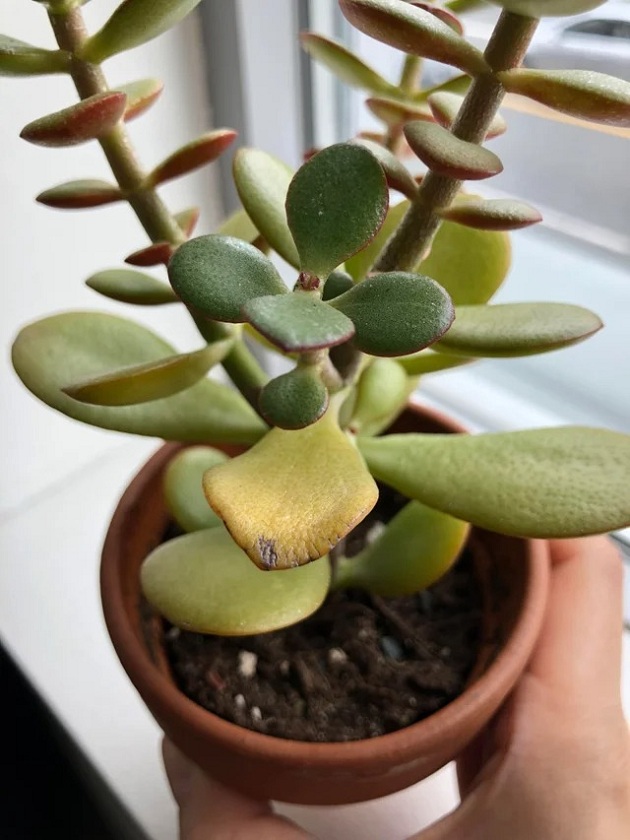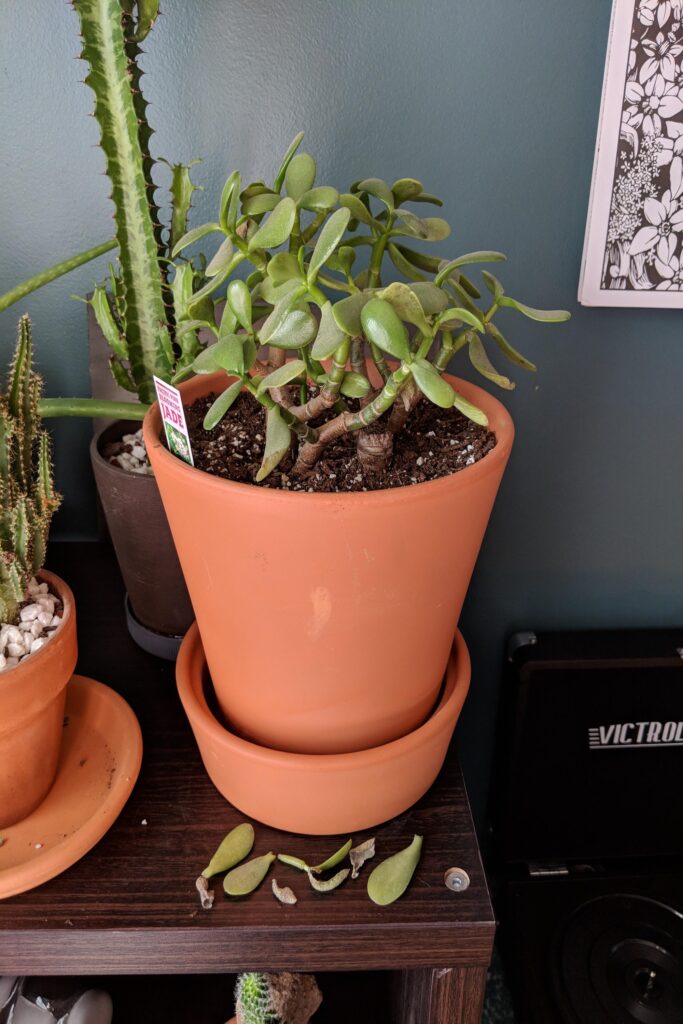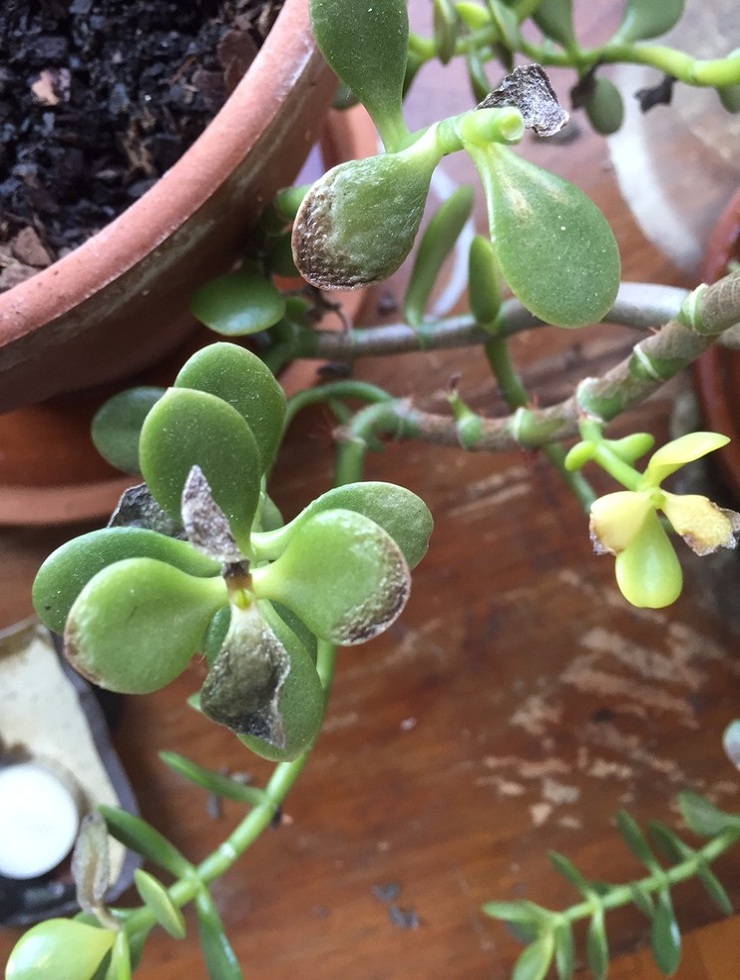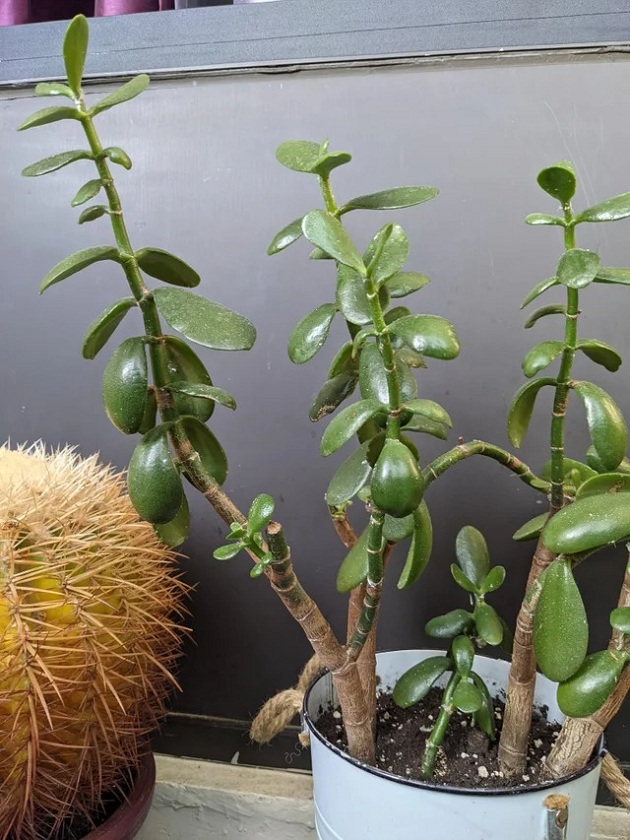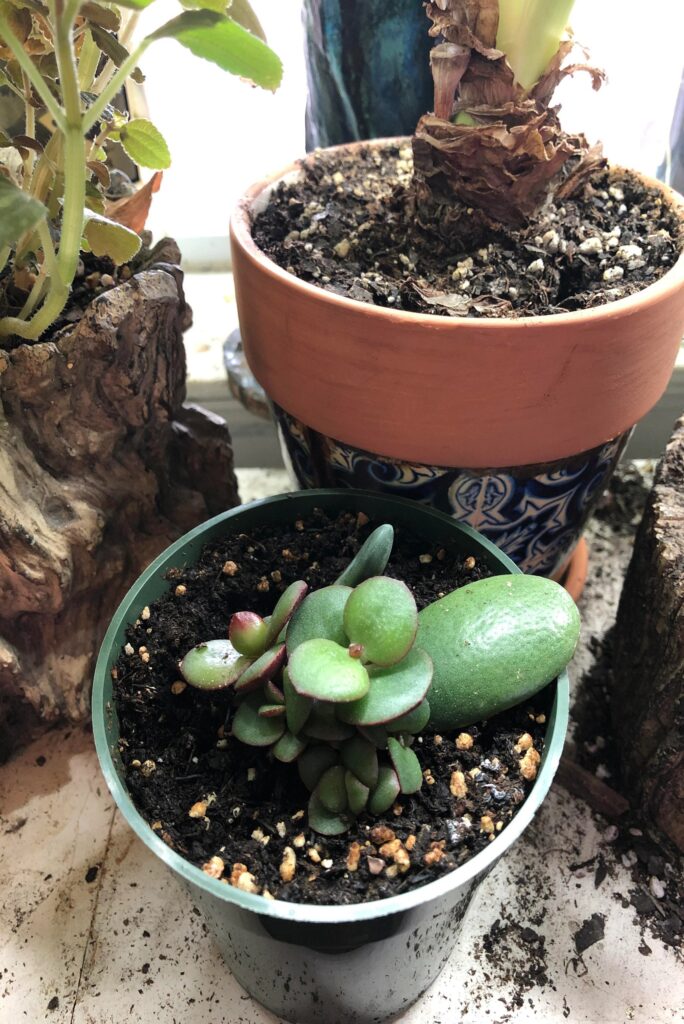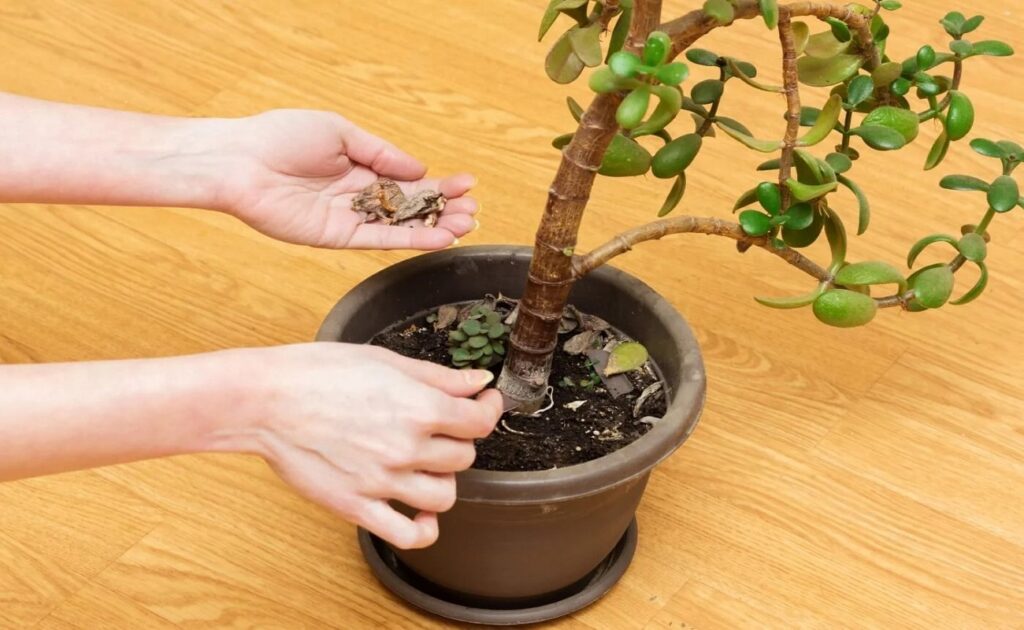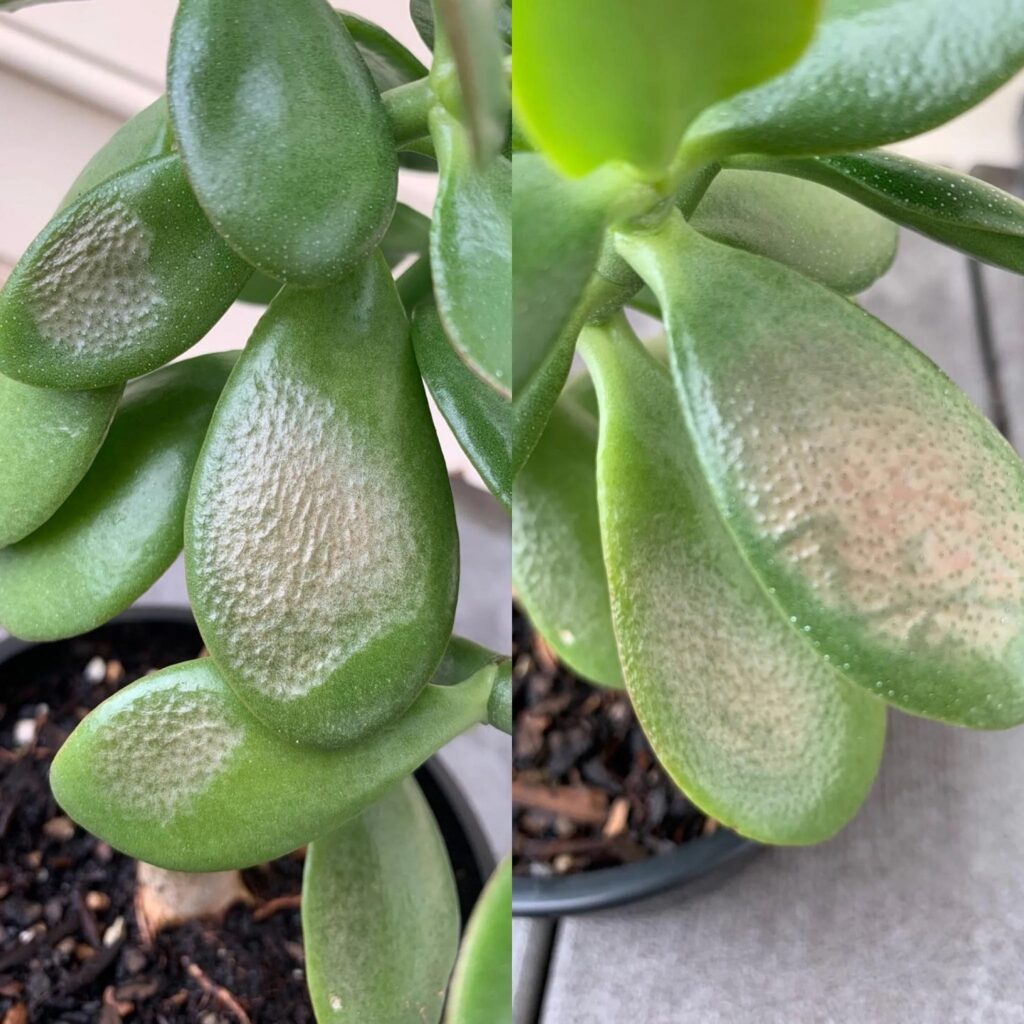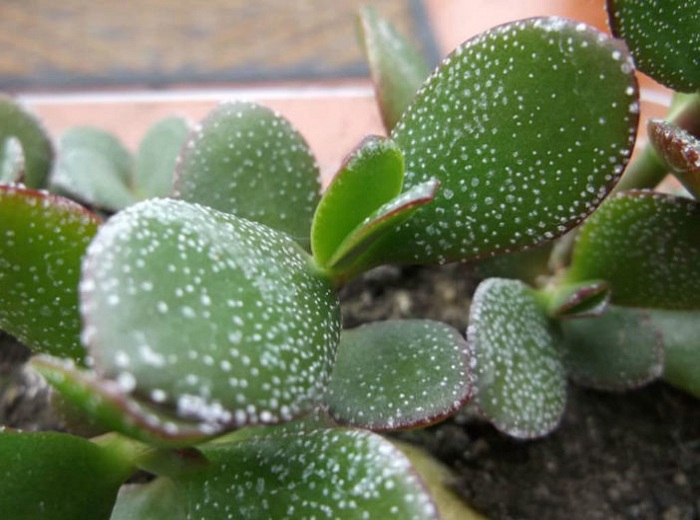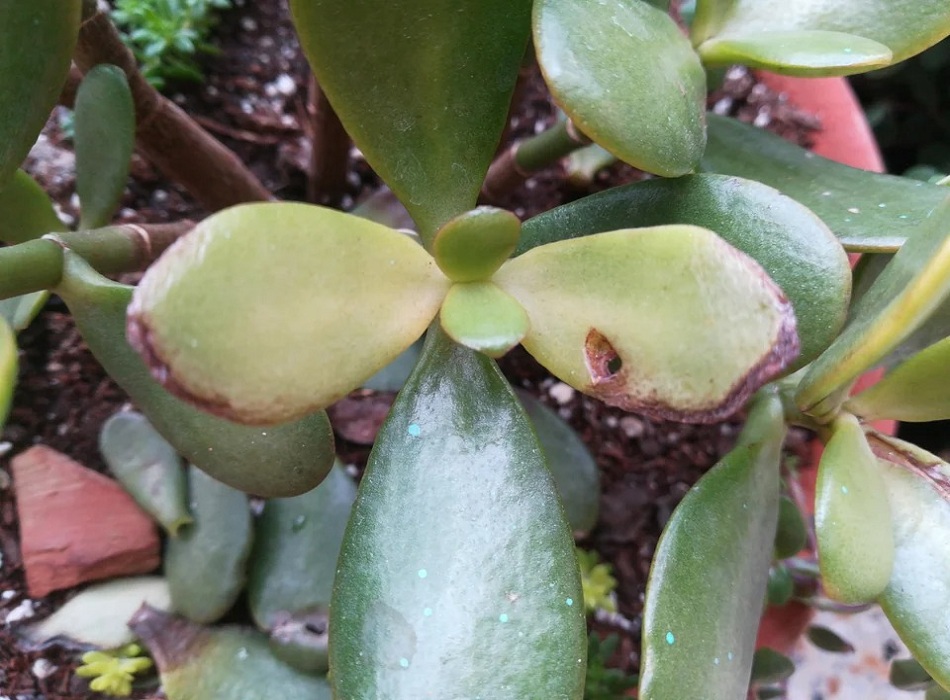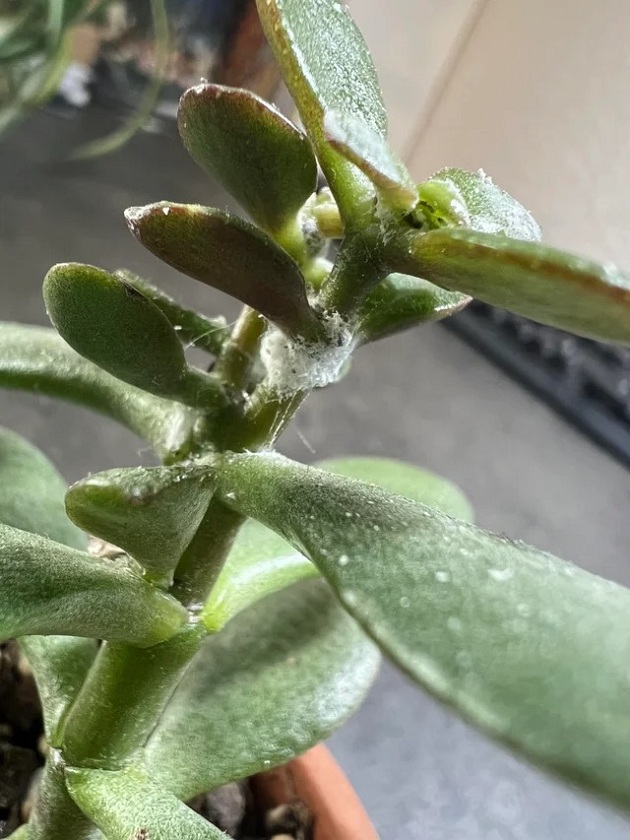When you understand all of Crassula ovata’s problems, maintenance becomes a breeze. Here is a comprehensive look at what you may do to revive a wilting jade plant.
Soft Yellow or Brown Leaves
Problem: Leaves that are yellow, brown, or translucent (watery) and look soft and droopy, with brown spots.
Causes: Overwatering, slow-draining soil, and a lack of drainage holes in the container. The plant’s leaves turn yellow and mushy as a result of the excess moisture, which can lead to root rot and ultimately its death.
Solution: Jade plants are native to dry areas with sporadic rainfall and sandy soil that doesn’t hold too much water.
You can avoid such problems by recreating the native circumstances of the jade plant.
If you want your plants to thrive, choose loamy soil and give it plenty of time to dry out in between waterings.
Check for drainage holes in the pot.
Reduce watering throughout the winter months when the growth rate slows.
Shrunken, dry, and falling foliage
Problem: Wrinkled, crisp, brown foliage that eventually falls off the plant.
Causes: It happens because of drought stress, which happens when you don’t water enough and the water doesn’t get to the roots. There’s also a chance of this happening if the plant is kept in a too-warm environment.
Solution: Jade plants that are stressed out by drought are simple to save. All you have to do is water the plant thoroughly until the soil is moistened and drenched, and water begins to seep out of the drainage holes in the container.
You should always water thoroughly.
Choose a growth medium that allows water and nutrients to drain easily.
Note: It is normal for the lower leaves to fall off the plant. Also, as plants mature and generate new foliage, the bottom foliage dies.
Black Leaves
Problem: Both the upper and lower leaves are turning a deep brown or black.
Causes: This is usually caused by overwatering. Jade plants cannot survive in very damp soil or insufficient light. Another cause is the risk of leaf crushing and damage during courier delivery or from placing too much weight on the plant’s foliage.
Solution: Reduce watering, remove damaged leaves, and make sure the plant receives filtered light every day.
Leggy & Stretched Plant
Problem: The drooping, deformed, and erratic growth of plant stems, leaves, or entire plants.
Causes: Low light or overwatering promotes root rot, which in turn generates lanky branches, stems, and leaves, which accounts for the drooping foliage. Low light causes the plant to become leggy and stretched out as it seeks more sunlight, but it also causes the leaves to become pale and weak.
Solution: Don’t water too much. Water the topsoil only if it becomes dry to the touch or if it begins to show tiny cracks.
Plant it in a windowless, bright area of your home where it will get indirect light and early morning sun. The ideal location would be one that is bathed in abundant indirect sunlight throughout the day.
Slowed Growth
Problem: Neither the plant nor its roots are growing at all, or rather very slowly. Its size doesn’t change for several weeks or months.
Causes: To begin with, it’s a slow-growing plant, and secondly, growth slows more in the winter as a result of less available light and cooler temperatures. In the spring and summer, though, it grows normally again.
Another cause is if the jade’s pot is much bigger than the root ball. Similarly, low light, severely poor soil, and old growing media all have an impact on its growth.
Solution: The ideal temperature range for plant growth is between 65 and 80 degrees Fahrenheit (10 C). Ample, bright light should be provided. You should relocate it to a warmer room in the house as well.
Your jade should be planted in a container that is about as big as the root ball.
Leaves shriveling and falling off
Problem: Soft to the touch wilting, mushy, limp, or shriveled leaves
Causes: Overwatering, insufficient sunlight, underwatering, freezing temperatures, or overfeeding are some of the causes of such problems.
Oversaturation is the cause of squishy leaves. In contrast, wrinkly, shriveled leaves are a sign of underwatering.
Solution: Adhere to a regular watering plan and let the soil dry out between soakings.
The plant thrives in indirect, bright light, which is ideal for growing. Do not expose the plant to direct sunlight unless it has been acclimatized.
You should move your jade plant into a warm place if the weather drops below freezing.
Overfertilizing your jade might cause it to wilt, so if you live somewhere chilly, you should cease doing it about mid-fall.
Sunburn
Problem: Damaged leaves turn a dark brown or black color and look like little spots on otherwise spotless leaves.
Causes: An overexposure to the sun.
Solution: To avoid scorching your plant, keep it out of direct afternoon light. Pick a position that gets plenty of light but not direct sunlight.
Hard Water Spots
Problem: A few leaves or the entire plant may be covered in white dots.
Causes: using mineral-rich tap water or subsurface water high in calcium.
Solution: Waiting a day before using tap water allows the minerals to settle out. Well, river, and reverse osmosis (RO) water are other acceptable alternatives.
When watering, make sure the plant’s leaves don’t get soaked. Carefully pour water around the pot’s base without causing the soil to overflow.
Overfertilization
Problem: The foliage’s edges are yellow and brown.
Causes: Frequent over-fertilization or prolonged exposure to direct sunlight.
Solution: If you have used a high-quality potting mix, fertilizing the plant once every 4–8 weeks with a balanced fertilizer that has been diluted to half or one-quarter of its strength should be sufficient.
Use compost or well-rotted manure as a soil amendment.
Pest Problems
Problems: Aphid activity on the Jade plant can be identified by the presence of a honeydew-like sticky material on the leaves and stems.
White, cottony spots are caused by mealybugs on the stem joints and leaves.
Chlorotic spots on the leaves are caused by spider mites.
Causes: Mealybugs, Spider mites & Aphids
Solution: If you want to keep your plant alive, you shouldn’t use an insecticidal soap that’s too powerful. To scare them off, shoot a powerful stream of water in their direction. Swab the afflicted leaves with a cotton soaked in rubbing alcohol to see if it helps.


